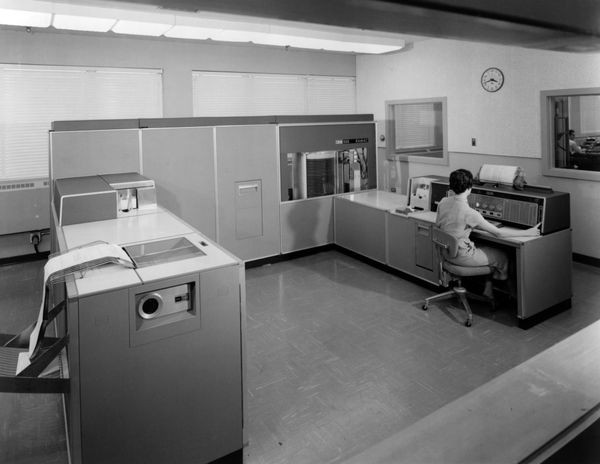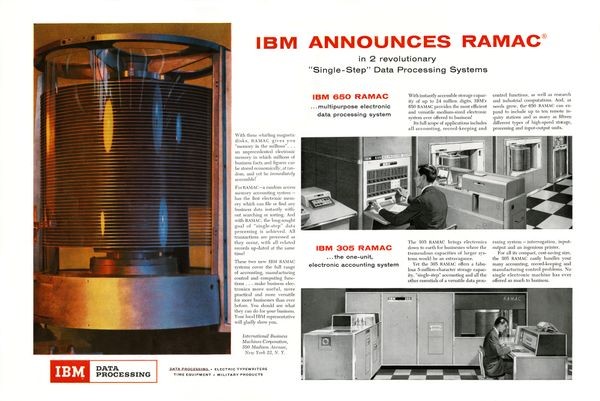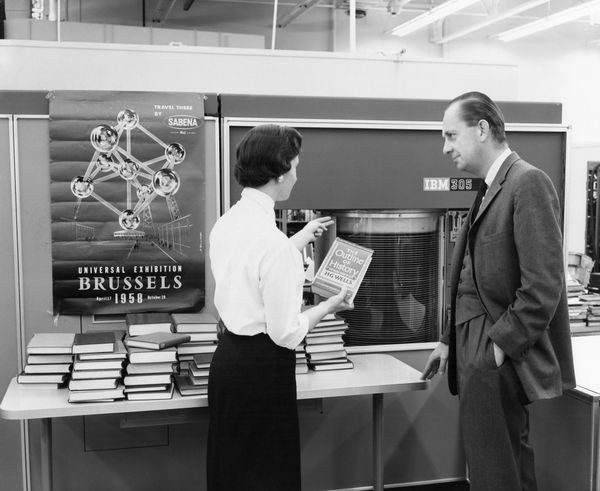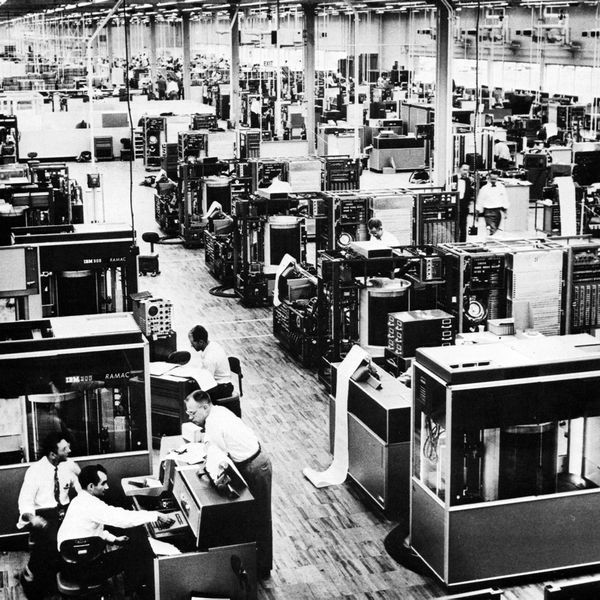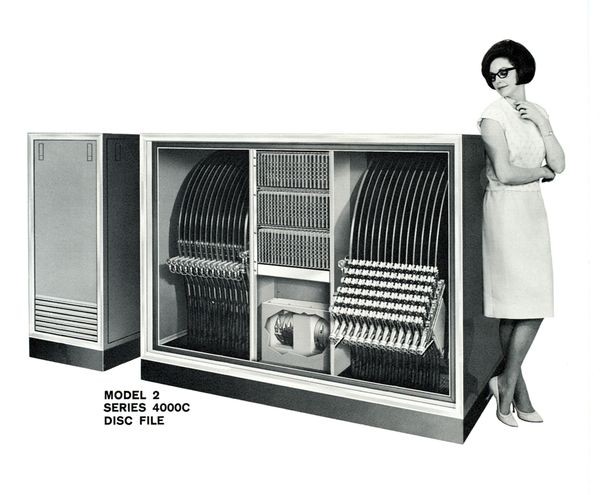Who Used RAMAC?
Who used RAMAC?
The RAMAC computer and disk drive was marketed for processing transactions “in modern business where time is money.”
Who used RAMAC?
RAMAC benefited anyone needing swift, random access to large amounts of information. It enabled a new era of “transaction processing,” updating data immediately rather than off-line in “batch mode.”
Crown-Zellerbach Paper Company bought the first RAMAC. Ironically, Crown was a leading supplier of stock for punched cards…which RAMAC helped replace. Other users included the 1960 Winter Olympics. Business Week noted, “Within moments, twin RAMACs will compute and print…results that would otherwise require hours of human calculation.”
Over 1,000 RAMAC systems sold to government, businesses, universities, and the military.
RAMAC Advertisement
The IBM 305 RAMAC was a vacuum-tube computer that processed business transactions in real time. RAMAC’s disk drive was also available for the IBM 650 computer.
View Artifact DetailWonders of RAMAC
“The secret of Professor Ramac’s remarkable ‘memory’ is a stack of 50 fast spinning disks….Stored on these disks by means of magnetism are the principal historical events of the world….”
So proclaimed an IBM press release accompanying a RAMAC at the U.S. Pavilion at the 1958 World’s Fair in Brussels.
Two years later, the Winter Olympics used another RAMAC system to calculate game scores in real time for the first time.
IBM was eager to find ways to excite the general public—not just engineers—by RAMAC’s potential.
IBM Pavilion, 1958 World’s Fair
IBM drew large crowds at the Fair with its 305 RAMAC system. RAMAC could answer questions on world history in 10 different languages.
View Artifact DetailIBM representative speaking with visitor
Visitors to the 1958 Brussels World Fair in 1958 could ask “Professor RAMAC” questions covering two thousand years of world history.
View Artifact DetailWhy San Jose?
There’s often tension between, “we’ve always done it this way,” and the need for original thinking to create breakthroughs.
Recognizing this, IBM in 1952 established a research lab in San Jose, California. The distance from New York—a 12-hour plane ride—gave the lab independence to pursue fresh ideas, such as RAMAC.
IBM San Jose laboratory
IBM’s west coast laboratory at 99 Notre Dame Street, San Jose, California — the birthplace of the world’s first disk drive.
View Artifact DetailRAMAC Assembly
IBM’s computer manufacturing in California had started in a former Del Monte fruit shed. Here, engineers test systems before customer shipment.
View Artifact DetailRAMAC Rivals
Companies besides IBM explored new storage ideas. Bryant Chucking Grinder Company, a computer drum manufacturer, began developing a disk drive in 1959—a horizontal shaft with eight or more 39” magnesium disks. Few sold.
Bryant large disk drive
This giant disk drive from Bryant stored up to 205 MB, the equivalent of 2.6 million punched cards. It was so large that special flooring was needed to support its weight.
View Artifact Detail